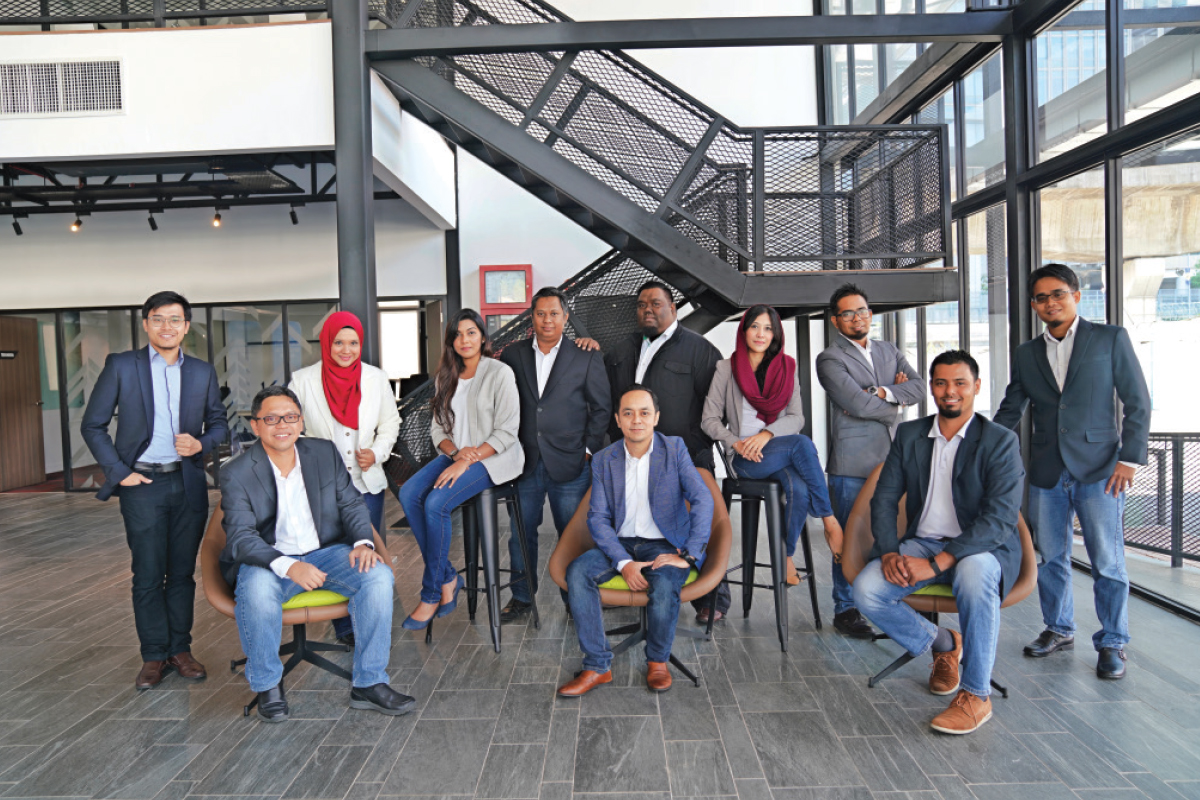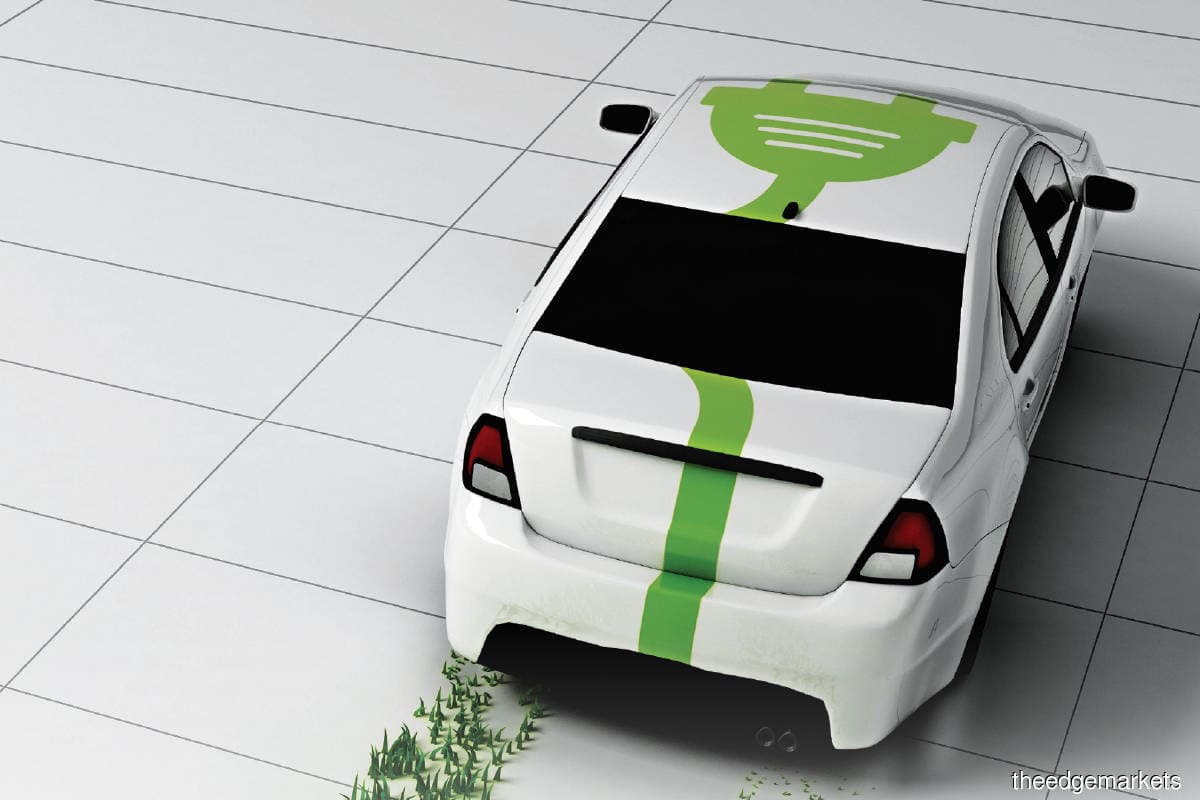This article first appeared in Digital Edge, The Edge Malaysia Weekly on August 16, 2021 - August 22, 2021
Hindsight is always 20:20 especially when it comes to decisions relating to technology. Looking back today from an environmental and climate change lens, we realise that a lot of the decisions made previously were wasteful and not very far-sighted.
For instance, when electronics like laptops were first introduced, they could have been designed to be easily collected, disassembled and recycled after use, so we would not end up with huge graveyards of e-waste, choking up our landfills and leaching toxic substances into the earth and waterways.
Or, what about gas emissions from vehicles and power plants? Couldn’t these have been designed better and implemented more effectively to minimise or even eliminate the ecological fallout from billions of tonnes of emissions being released into the atmosphere?
Although it is late in the day to be thinking about these things, thankfully, more can be done. Many new industries have been developed to deal with these very problems in basic design and give humanity a chance to start anew and do better.
In this article, Digital Edge speaks to industry players striving to make two emerging technologies — data centres and electric vehicles (EVs) — more sustainable.
Data centres are a key enabler of the digital economy. But they require a huge amount of energy to cool their servers. As Malaysia hopes to become a data centre hub in Southeast Asia, it is important to explore how renewable energy and energy-efficient technologies can be used to offset the carbon footprint of data centres. After all, the electricity generation mix in Malaysia is currently dominated by coal and natural gas.
Meanwhile, EVs are driving the green revolution in the transport sector. While they are not a common sight on Malaysian roads at the moment, more EVs are expected in the coming years as global automotive manufacturers and governments have committed to phasing out internal combustion engine (ICE) vehicles.
However, this will also likely produce a tsunami of lithium-ion batteries, which power EVs. The International Energy Agency projects global EV stock to grow from over 11 million in 2020 to almost 145 million in 2030, and for electric two or three-wheelers to reach 385 million in 2030.
If not managed properly, the batteries could pollute the environment while more lithium continues to be mined from the ground. Ultimately, it would not make sense if EVs, which are meant to reduce greenhouse gas emissions from the transport sector, result in more environmental damage.
Finding a second life for EV batteries
A few years ago, Dr Gobbi Ramasamy, an associate professor at Multimedia University’s faculty of engineering, was approached by Tan Chong Motor Holdings Bhd with lithium-ion batteries from Nissan Motor’s Leaf electric vehicles (EVs).
Nissan Leaf was the first EV to be sold in Malaysia in 2013. Lithium-ion batteries for EVs tend to last for five to 10 years, so the batteries from the first generation of Nissan Leaf sold in Malaysia were due to be sent to Japan for recycling, says Gobbi.
But that was costly, so the company approached Gobbi through Lee Yuen How, his former student who founded the EV charging company EV Connection Sdn Bhd.
“We saw that we are at the beginning of an era. You already can see the impact of EVs now in the huge number of used batteries sitting in warehouses,” says Gobbi.
He wanted to give a second life to these lithium-ion batteries, which still had enough power to be used for other purposes. One particularly feasible option was to turn them into battery storage for solar power systems.
Currently, solar power generators are able to sell their excess energy back to the grid through the government’s Net Energy Metering Scheme.
“But this scheme will eventually stop. What is going to happen then? Peak usage is in the evening, but it is during daytime that the solar panels generate electricity. Batteries for energy storage will become an important element then,” says Gobbi.
While the used lithium-ion batteries no longer have enough capacity to support EVs, they are sufficient for energy storage systems.
In fact, this is something that Datuk Dennis Chuah, founder and executive director of Eclimo Sdn Bhd, has been doing. Eclimo has been leasing its EV two-wheelers to companies like KFC and DHL as well as local authorities to do deliveries and patrolling since 2008.
After five years, he realised that the lithium-ion batteries could no longer support the two-wheelers. He replaced the batteries and refurbished the old ones into energy storage solutions.
“This second life given to batteries is very important because they still have 70% of power capacity. Only when it reaches zero should you think about recycling them,” says Chuah.
Not many recyclers are eager to accept used EV lithium-ion batteries as the recycling process is costly and energy intensive. It is also considered a waste of resources to dismantle the battery when its useful life is not over, given the amount of resources spent on manufacturing the battery.
According to various sources, less than 5% of lithium-ion batteries are recycled in Europe and the US. Almost no lithium is recovered in the European Union (EU) currently because it is deemed less cost effective than primary supplies, according to a European Parliamentary Research Service article in July.
Chuah has been selling the refurbished battery packs to local authorities in East Malaysia, who install them in remote villages that have solar panels. He has also found customers in night market operators, who used to rely on diesel generators to power their lights and fans.
“The pasar malam operators can use the refurbished battery pack to power 10 LED lights for 10 hours. For Orang Asli villages, I can design the battery to last for three to four days before they need to recharge it with solar panels,” says Chuah. The battery can be used for another five to 10 years, he adds.
It is estimated that every one million new EVs will add around 25GWh of storage to the system, according to Gobbi’s research paper published in the Journal of Energy Storage. This highlights how EVs can not only transform the transport sector but also the energy industry.
Regulations for taking back old batteries
In 2018, China issued new rules that require EV manufacturers to be responsible for the afterlife of EV batteries by setting up facilities to collect and recycle these spent batteries. The EU is finalising similar proposed regulations that also mandate minimum levels of recycled content for batteries.
Both Gobbi and Chuah observe that such regulations are extremely important to ensure that the batteries do not end up in landfills or in the hands of illegal recyclers. They incentivise manufacturers to design batteries that can be easily dismantled and promote technological innovations in the recycling and refurbishment processes.
“The regulations must say that if you are producing this many cars, you must also have the capacity to recycle this many batteries,” says Chuah.
Alongside the road map to introduce more EVs in Malaysia, there must be a long-term plan to manage the batteries, adds Gobbi. “You cannot wait to only look at this matter 10 years later, when you already have 500,000 EVs on the road.”
A clear policy signal would also help third parties such as Chuah and Gobbi, who are finding second lives for lithium-ion batteries. As the price of new lithium-ion batteries continue to decline, Chuah may struggle to find customers for his refurbished battery packs.
He is already faced with price pressures to keep his electric two-wheelers affordable compared with traditional motorbikes. “That’s why I make sure I collect the batteries and sell them as battery packs, so I can stretch my profits.”
Refurbishing an EV battery requires taking the battery pack, which comprises many modules, apart. The third party will have to buy the old batteries, dismantle them and test the modules to assess their remaining capacity. They then have to repack the good modules into battery packs.
“We are worried that the price of second-life batteries will be equivalent or higher than new lithium-ion batteries, considering that the price of the latter keeps going down,” says Gobbi.

"When companies ask for permission to sell EVs, the government should ask them to have a proper plan for battery recycling from the day it is installed in the car until it is disposed of.” - Gobbi
A business opportunity for refurbishment
Automotive manufacturers and governments are already undertaking various efforts to create a market for used EV batteries (refer to box). Could this be something Malaysia can tap?
There are several factors that industry players must consider first. The cost structure, as mentioned by the interviewees, is currently a hurdle.
Of course, in Eclimo’s case, Chuah does not have to buy used batteries since it has its own supply. He also distinguishes his company by designing the battery packs to be easily disassembled.
“The easiest way for people to assemble lithium cells is spot welding. It’s very hard for you to recycle these cells. But I don’t use welding. When you open the casing five years later, the cell is still intact. I have a patent on how I assemble the battery pack,” he says.
As more companies aim to lower their carbon footprint, this could open up opportunities for Chuah to lease his EV two-wheelers. For instance, Grab is collaborating with Hyundai Motor Group to accelerate EV adoption among its riders.
If more automotive companies are required to manage their used EV batteries, it would make the refurbishing business more attractive and economical.
Regardless, the journey ahead is long. Even the collection of e-waste for recycling is slow in Malaysia due to lack of awareness, Gobbi observes.
“That’s why, when companies ask for permission to sell EVs, the government should ask them to have a proper plan for battery recycling from the day it is installed in the car until it is disposed of,” he adds.
Fortunately, this is an area the government is interested in. Gobbi’s project to study the effectiveness of old EV batteries as energy storage for solar power systems is funded by a grant from the former Ministry of Energy, Science, Technology, Environment and Climate Change.
“In Malaysia, we now have EVs from companies like Volvo, BMW and others. We are trying to educate everyone that there is a huge business opportunity in second-life batteries and everyone will benefit from this,” says Gobbi.
Initiatives in refurbishing old EV batteries
• Nissan Motor Corp opened Japan’s first plant specialising in the reuse and recycling of electric vehicle (EV) lithium-ion batteries in collaboration with Sumitomo Corp in 2018. It has developed technology to assess the capacity of all modules in a battery pack at once and is working on a pilot project to use old EV batteries as storage for solar-powered street lighting.
• Toyota Motor Corp has partnered with Chubu Electric Power since 2018 to turn old EV and hybrid vehicle batteries into renewable energy storage systems.
• BMW Group works with various companies to recycle used EV batteries or turn them into energy storage systems.
• Tesla says that 100% of its EV batteries are recycled and that it does its best to extend the useful life of each battery pack. It works with Redwood Materials, which aims to create a closed-loop recycling process for EV batteries.
• SungEel HiTech, South Korea’s largest battery recycler, has a closed-loop recycling process to treat lithium-ion batteries from electronics and it serves as a key supplier to battery makers. It has a factory in Malaysia.
Reducing the carbon footprint of data centres
The demand for data centres is unlikely to cease given our reliance on the internet. However, data centres require a huge amount of energy to power and cool their equipment.
The International Energy Agency (IEA) estimates that global data centre electricity demand was around 200TWh in 2019, or around 0.8% of global final electricity demand.
In Malaysia, data centres contributed 1.4 million metric tonnes of carbon dioxide in 2011 alone and spent close to RM714 million on energy bills, according to the 2015 Malaysian Communications and Multimedia Commission’s technical code specifications for green data centres.
Based on international industry averages, data centres are responsible for 20% of the information and communications technology (ICT) industry’s energy consumption and carbon footprint.
But this energy demand can remain flat, the IEA points out, if there is a shift towards hyperscale data centres that are more efficient. The use of renewable energy is also an important solution.
While solar power systems for all data centres in Malaysia sound like a no-brainer, there are a few challenges to take note of, says Elmie Fairul Mahsuri, managing director of GSPARX. The company, which offers renewable energy solutions, is a subsidiary of TNB Renewable Sdn Bhd.
“Many existing data centres have limited rooftop space, which is insufficient for the required number of rooftop solar panels to fully power their operations,” says Elmie.
“The number of hours with sufficient sunlight is important too as rain and clouds can affect the steady supply of energy needed to power the 24-hour operations.”

Elmie (middle) with the GSPARX team (Photo by GSPARX
Additionally, the Energy Commission only allows 75% of maximum demand of the consumer’s current installation to preserve the stability of the national power grid system. This means data centres still need to rely on conventional electricity supply.
That’s not to say nothing is being done. For instance, GSPARX partnered with NTT Ltd in January to install solar power systems in the administrative buildings of NTT’s data centre campus in Malaysia.
Microsoft Corp, which plans to establish its first data centre region in Kuala Lumpur, has said it will have power purchase agreements for green energy to power all its data centres.
Elmie has a few recommendations for data centre operators. Existing ones could consider offsite solar energy generation by subscribing to a green tariff or purchasing Renewable Energy Certificates (REC).
Green tariffs, offered via Tenaga’s myGreen+ scheme, enable customers to purchase green energy without having to install their own renewable energy power system. Customers can subscribe to the scheme in 100kWh blocks at a rate of eight sen/kWh, subject to a quota. Electricity consumption beyond the scheme is charged according to the normal tariff.
RECs are handled by TNBX, another subsidiary of Tenaga, and represent the delivery of 1MWh of renewable energy to the grid. Companies can purchase RECs to diversify their energy portfolio if they cannot generate renewable energy themselves. TNBX started offering Malaysian RECs through the Malaysian Green Attribute Tracking System in May 2020.
Subscribing to these two solutions can offset the carbon emissions produced by data centres that are not able to generate sufficient renewable energy by themselves. However, it does not mean that only clean energy is supplied to the data centre; it merely means that an equivalent amount of green energy is supplied to the grid.
This seems to be a popular solution for tech players. According to the IEA, global hyperscale data centre operators like Google and Apple were among the top takers of power purchase agreements for renewable energy in 2019.
For data centres that are still in the planning stage, Elmie says rooftop solar panel installations can be included in the design from the beginning.
The IEA report also suggests that governments, grid operators and data centre operators collaborate to determine how renewable energy investments can benefit the whole system. Investments in energy storage solutions should also be encouraged.





